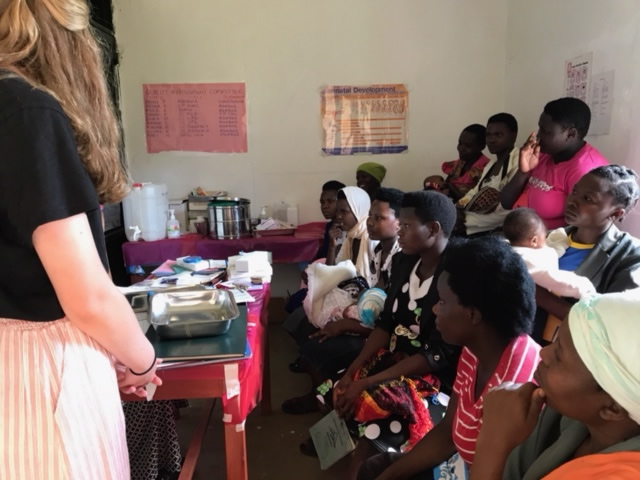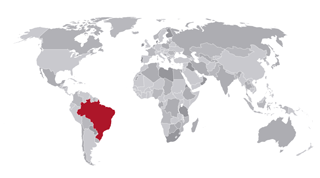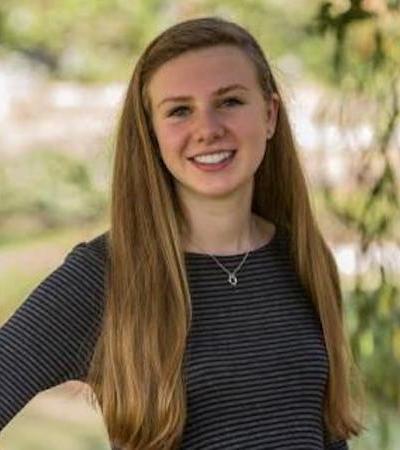Foundation for International Medical Relief of Children (FIMRC), Uganda
Summer Entrepreneurial Internships

On Saturday, June 2…
I’ve been here two weeks to the day today and it’s been filled with getting acclimated to the rainy season (this is no joke…it usually rains at least twice a day), the bucket baths, the Ugandan diet, cultural mannerisms and walking everywhere (some of the hikes we do on outreach are the type of thing I would do for fun on the weekend). I now have two weeks of working at the clinic under my belt and have been able to learn their system and get to know the staff, allowing me to know how the clinic operates on the daily. Although things have been running relatively smoothly recently, there was definitely some adjustment over the first couple of days, with one instance in mind.
The clinic staff has teatime every day at 11am. When I learned of this I was excited that there was time set aside in the schedule for tea because I am a huge tea drinker. My first day at the clinic, I got to the room where the staff eats lunch and has teatime and none of the other volunteers were in there, so I prepared my tea and then stood by the wall eating my chapatti and trying to drink my piping hot tea. All the clinic staff chatted in Lughisu and occasionally broke out in fits of laughter. In thinking about it later, I am sure this is what their teatime looked like every day, and I have no expectation for them to change the way their well-deserved break looked because I was there, but I definitely felt like an outside observer looking in, and not like I was present at all. I typically feel very comfortable conversing with unfamiliar people and I pride myself on being able to quickly adjust in immersive situations or foreign cultures. I feel this way in part because my family moved so much growing up that embracing being the outsider became the only way to get acclimated and thrive in the places where we moved. I had just flown continents over and navigated five airports; I had never flown internationally by myself and that was by far the longest stretch of travel I had ever embarked on, and so that’s why my discomfort during something ‘silly’ like teatime surprised me.
Within the sphere of the clinic, I struggled with the fact that I wanted the staff to just know me and understand my intentions and I wanted to have a strong working relationship with all of them. I didn’t want the friction, uncertainty, and time that came along with developing this relationship. I came to embrace the challenge and the open-mindedness with which they approached me. In the following days, I ensured that I spent at least a day at each of the stations: vitals, consultation with the clinicians, lab, treatment, and pharmacy, and maternal child health, to work alongside and learn more about all of the staff. The people that I was working with that day (and had worked with during previous days) began to chat with me during teatime, and this sometimes sparked the rest of them to ask me questions. When there was space, I’d squeeze myself onto the bench right alongside the rest of them. They still would speak in Lughisu (I did not anticipate nor want this to change) but I felt less and less like a ‘foreign’ fly on the wall. My first week was sort of an acclimation period and I initially felt a little bit like eight weeks would be a long time. This past week has flown by, though, in part because the clinic staff now know me and greet me as “Caro” every morning with smiles and ask if I am going to work at their station with them that day. I am happy I am not here for two weeks or a month like most of the other volunteers, because I would have felt like I only got a cursory sense of the place. I strive to take advantage of this opportunity and be both adequately present and introspective in order to make the most of my remaining six weeks here.
FINAL REPORT
I spent eight weeks this summer working with the Foundation for International Medical Relief of Children (FIMRC) at their Project Bududa site in rural Uganda. FIMRC is an American non-profit organization headquartered in Philadelphia whose mission is to improve the worldwide health of families and children through sustainable patient education and healthcare initiatives. FIMRC operates out of nine project sites abroad and, with the exception of the Field Operations Managers, all the clinic staff employed at each site are from the region. Additionally, there are many local volunteers who work in conjunction with the clinic staff on outreach as community health educators, helping to promote health and wellbeing within their villages and encouraging visits to the clinic when needed to consult medical professionals.
Project Bududa operates in the Bududa District in the Eastern region of Uganda, adjacent to the border of Kenya. Hours away from the capital or any large city or town, Bududa is a very rural district, often labelled as the “forgotten district” because it can only be accessed by dirt road and government services often fail to adequately reach its citizens there. President Museveni passed universal free healthcare a couple of decades ago, but it failed to reach and adequately serve rural communities like Bududa. There are severe systematic issues with the free government aid clinics throughout the country primarily because of worker absenteeism and patients not receiving the free healthcare they were promised. As a result, there are many NGOs in Uganda (many healthcare centric) that have come over time to fill niches and meet needs that were not being met. So, with the aim of rectifying the global health inequalities that this district experiences, FIMRC established Project Bududa, a Health Center III staffed by several clinical officers and registered nurses who offer general care as well a variety of lab tests and medications.
One thing I witnessed in my time there is how powerful misconceptions can be, especially given that the vast majority of citizens there do not have access to internet nor a strong working knowledge of health and wellbeing. Because of this, it is so difficult to deal with the repercussions of misconceptions and rumors gone rampant. Anyone can say anything, and it can take root within the community because individuals cling to this misinformation in fear. This occurrence makes it difficult for the clinic staff, who work so hard on patient education initiatives and extensive individualized patient counseling, to have their work trusted by the community. While I wholeheartedly endorse patients making individualized healthcare decisions, I want these decisions to be informed and made with a knowledge and understanding of the free resources that are available to them. Nonetheless, the outreach and patient education initiatives that we did was some of the most impactful work I engaged in while I was there because it empowers people to make individualized decisions about their care. This work relies on a network of community members. Community health educators allowed us to go out into the community and engage and access patients that may not be seeking medical treatment or consult as they should, maybe lacking the knowledge of proper self-care and care of their newborns and children or altogether are unaware of the free services that the clinic offers. I loved the opportunity to hike up to their villages and enter into their homes to discuss healthcare and attempt to foster healthy habits like using malaria nets, taking antiretrovirals (ARVs), immunizing babies, or encouraging mothers to consistently attend their antenatal care checkups. These discussions could reduce the number of patients with preventable issues that are treated at the clinic on a daily basis. This outreach covered quite a wide amount of both topical and geographical breadth. Several patients with a little encouragement or advising during outreach trips would begin to take their healthcare into their own hands and advocate for themselves, and seeing them come into the clinic in the days following was an incredible manifestation of longitudinal healthcare for me to observe.
Along the same lines, I spent my time there strategizing to increase maternal attendance at antenatal appointments. I worked to do this by increasing understanding of what goes on during the appointments and emphasizing why this is valuable for both the mother and the child. I spent many days at the maternal health clinic watching mothers eight-months pregnant come in for their first time to receive antenatal care for their pregnancy. I was stunned the first time this happened, yet sadly I saw it enough in the following weeks that it became nothing out of the ordinary. I was upset that they were not receiving information about either their health or the health of their child, but especially that they had missed the window to take important prenatal supplements like folic acid, or antimalarial medication to prevent disease passage from the mother to the baby. I sought to remedy this lack of education by building information into the outreach curriculum and also reaching a target audience of young women or mothers, whether it is a microfinance group or arranging a new support group, to stress the importance of antenatal care for the health of both the mother and child. All of this was in hopes that they would attend adequate antenatal check-ups for their current and future pregnancies. This was a worthwhile project to spearhead because I was able to offer a different perspective, and then have conversations with the staff about what could be implemented to improve their deliverance of care. It was also something that has been a chronic problem at the maternal health clinic and it was valuable to begin the process of improvement.
One day at the clinic one of the lab technicians asked me when I started thinking about coming to Uganda. I had no idea why I was asked this because I thought all that mattered was that I was there now. We talked a little bit and then he grinned at me and remarked, “Why can I think about something for so long and nothing happens?” I used his comment to guide my outlook throughout my time there; I strived to live this international experiential education to the fullest, being simultaneously present and introspective. I wanted to acclimate to the day-in and day-out operation of the clinic by learning their system and getting to know the staff. Right from the beginning I wanted the staff to know me and my intentions, and to have a strong working relationship with all of them. I embraced the open-mindedness with which they approached me and sought to fulfill my goal of spending my time there working and doing things that were beneficial to the advancement of the clinic, not just the things that I was interested in. I also wanted to further develop my patient interaction skills and become cognizant of the kind of interactions the patients wanted. Whenever interacting with those receiving care, I tried to always remember that they may approach healthcare with a healthy degree of skepticism, given that they may have had negative experiences at government clinics in the past.
I also wanted to learn their system and familiarize myself with global health in the context of Uganda, learning their standards of patient care. I received all sorts of questions essentially alluding to the question of, “What can they really do in their healthcare facilities anyway?” I was frustrated by the assumption that they are unable to treat their patients effectively. It cannot be denied, they have fewer resources and technologies than we do here, but I observed firsthand that being less technologically endowed does not necessarily correlate to providing inferior care. I was amazed by how much they could do with the ‘technologically inferior’ tools that they had at their disposal. At the maternal health clinic, they could determine essentially everything they needed about the mother and health of child by palpating her abdomen to determine the positioning of the baby, and using a metal tube to find and amplify the fetal heartbeat. I observed time and time again that beyond the tangibles, the genuine care and deep investment the clinicians showed for their patients could transcend any disparities that were present.






